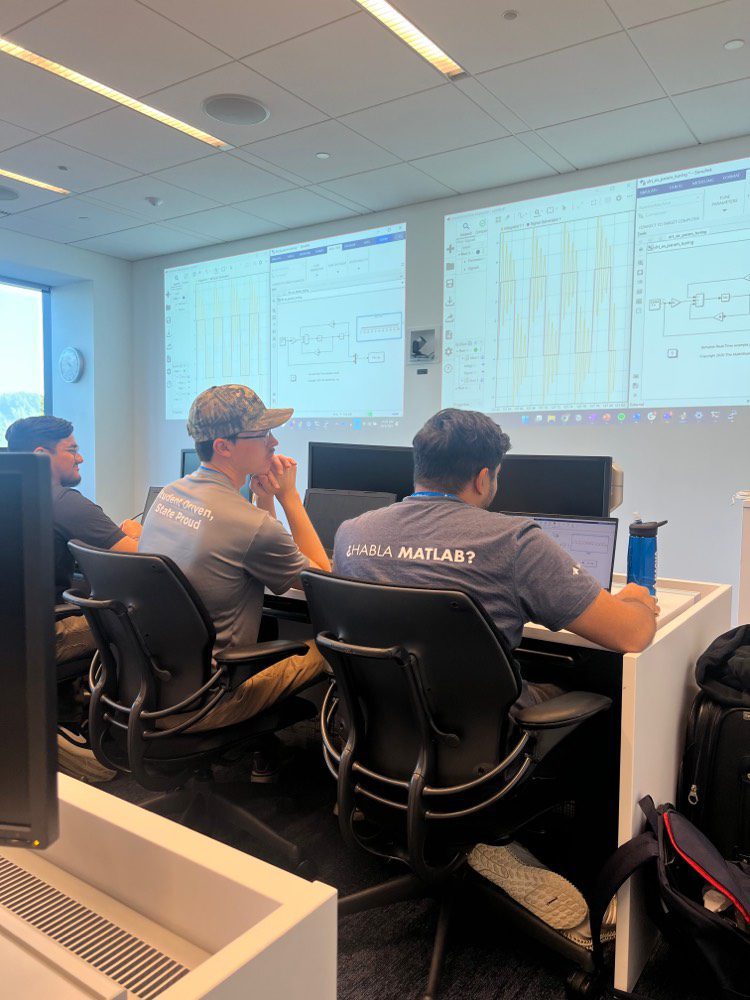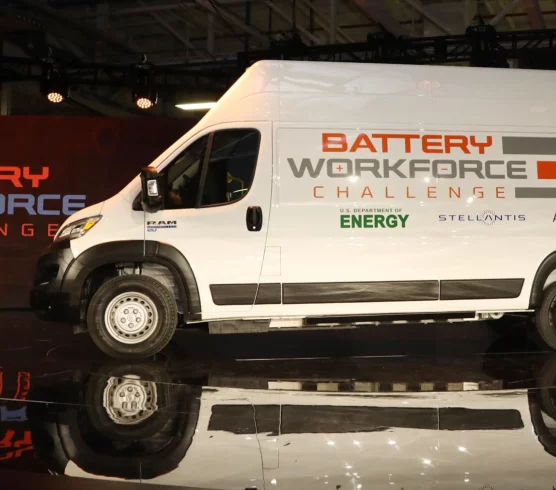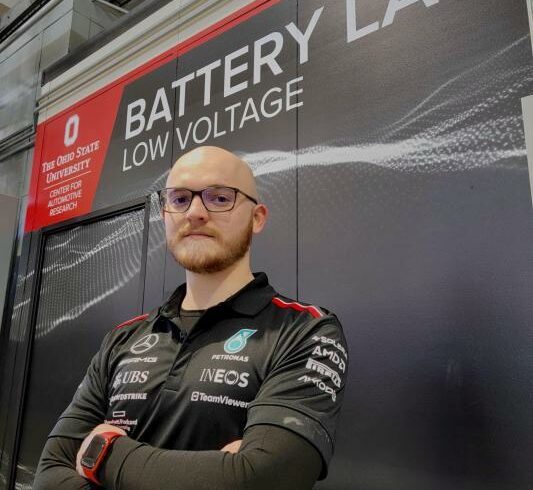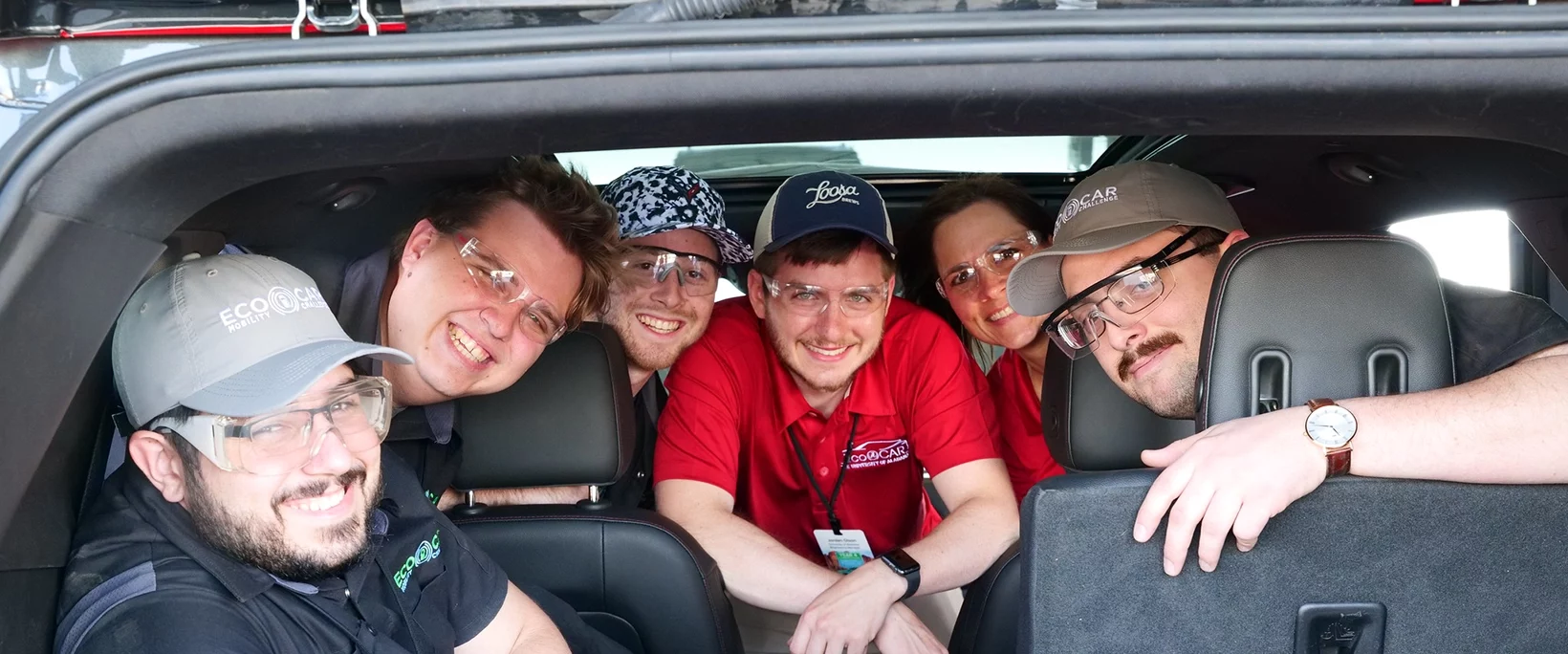By Em Jankauski
The hum of the 2023 Cadillac LYRIQ’s motor will be music to the EcoCAR EV Challenge teams’ ears. In this four-year collegiate automotive engineering competition, students will disassemble the Cadillac LYRIQ and reassemble it with their own student-designed propulsion systems to learn about connected and automated vehicle technologies and other innovations to analyse energy efficiency.
The EcoCAR EV Challenge mirrors many of the development practices used in the auto industry. Training focused on these workflows is key to teams’ success in the competition. This unparalleled experience sets students apart from their peers as they prepare transition to industry.
While teams are still a few years out from spinning their electric motors, students will begin the process of bringing these vehicles to life in Mathworks’ Speedgoat training.

Here students will receive training on using two Speedgoat units — one is a smaller computer meant to live on the car and serve as a module that’s running the team’s software, and the other is a large bench-top unit, known as the hardware-in-the-loop, or HIL, bench, acting as the team’s virtual vehicle.
“A big part of year two of the competition is they’re going to be disassembling the cars,” said David Ord, the advanced systems modelling and controls engineer for Argonne National Laboratory’s Advanced Vehicle Technology Competitions. “In lieu of the LYRIQ, the HIL bench acts as a surrogate vehicle.”
Students will use the Speedgoat units to virtually design and test their vehicle’s hardware and software. Speedgoat test systems are ideal for rapidly and continuously prototyping control designs and thoroughly testing embedded controllers with digital twins.
When the initial design phase is finished, the team will unplug its controller from the HIL bench unit and drop it into the LYRIQ.
The Speedgoat controller does not know the difference between controlling a virtual vehicle versus a real vehicle, according to Ord. This staging is a standard industry practice but for the students, the experience makes all the difference.


“This training is absolutely critical for their development process,” Ord said. “Going from a simulation-only environment to a vehicle environment is a really big jump, and having that experience is crucial in the development process because it allows you to do a lot of real-time testing that you can’t do in a virtual environment.”
Sessions consist of hands-on training with Speedgoat and Simulink Real-time systems including input/output functionality, Controller Area Network communication, automated testing and building interactive applications.
The return on investment for students? It’ll pay dividends.
“If you have developed a HIL bench or you’re familiar with how HIL benches work, that’s just immediately a gigantic step forward over the average candidate,” said Ord, an EcoCAR alumnus.
For Ord, the training and hands on-experience with a HIL bench was “one of the biggest” selling points in working on the HEVT team during EcoCAR 2. According to Ord, this experience direcylu landed him an internship working in the HIL bench environment.
“It’s a major part and it’s always going to be a major part of development in the industry,” Ord said. “It’s a huge thing to have on your resume.”



